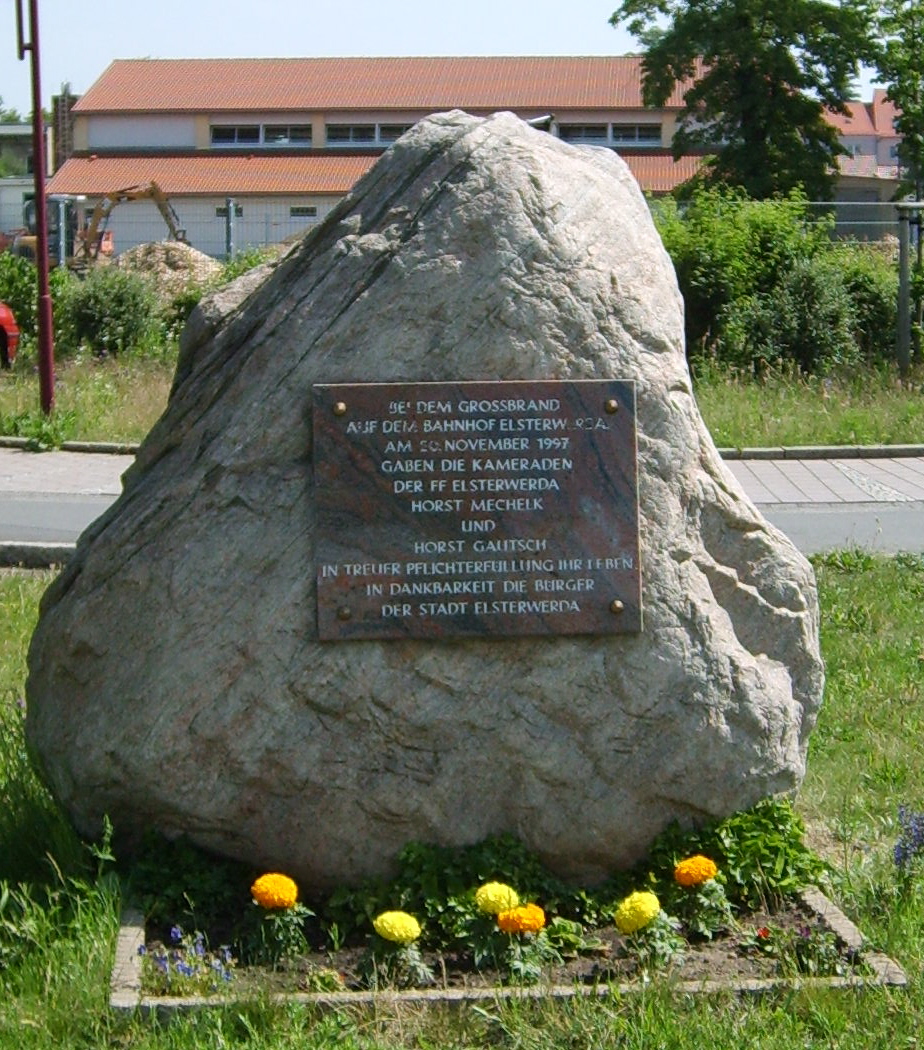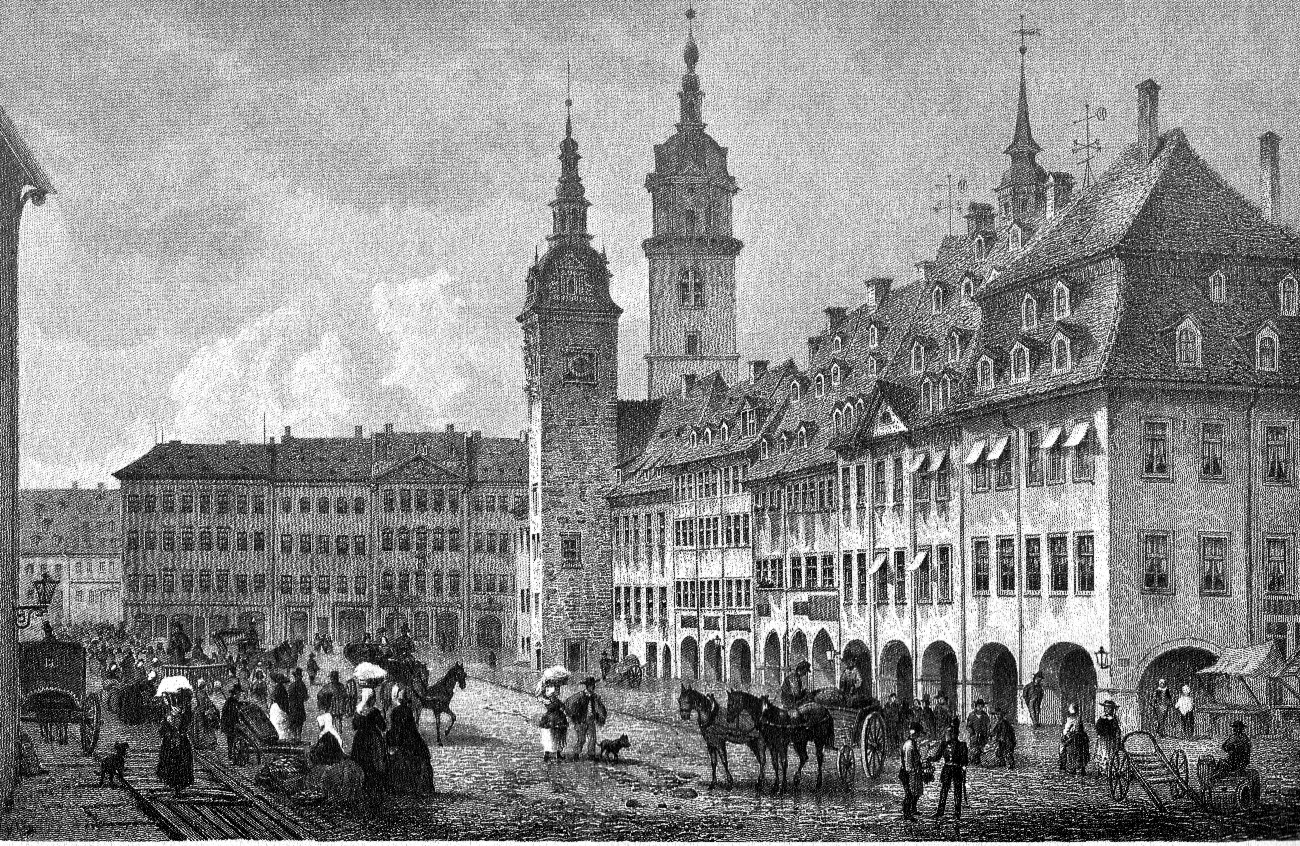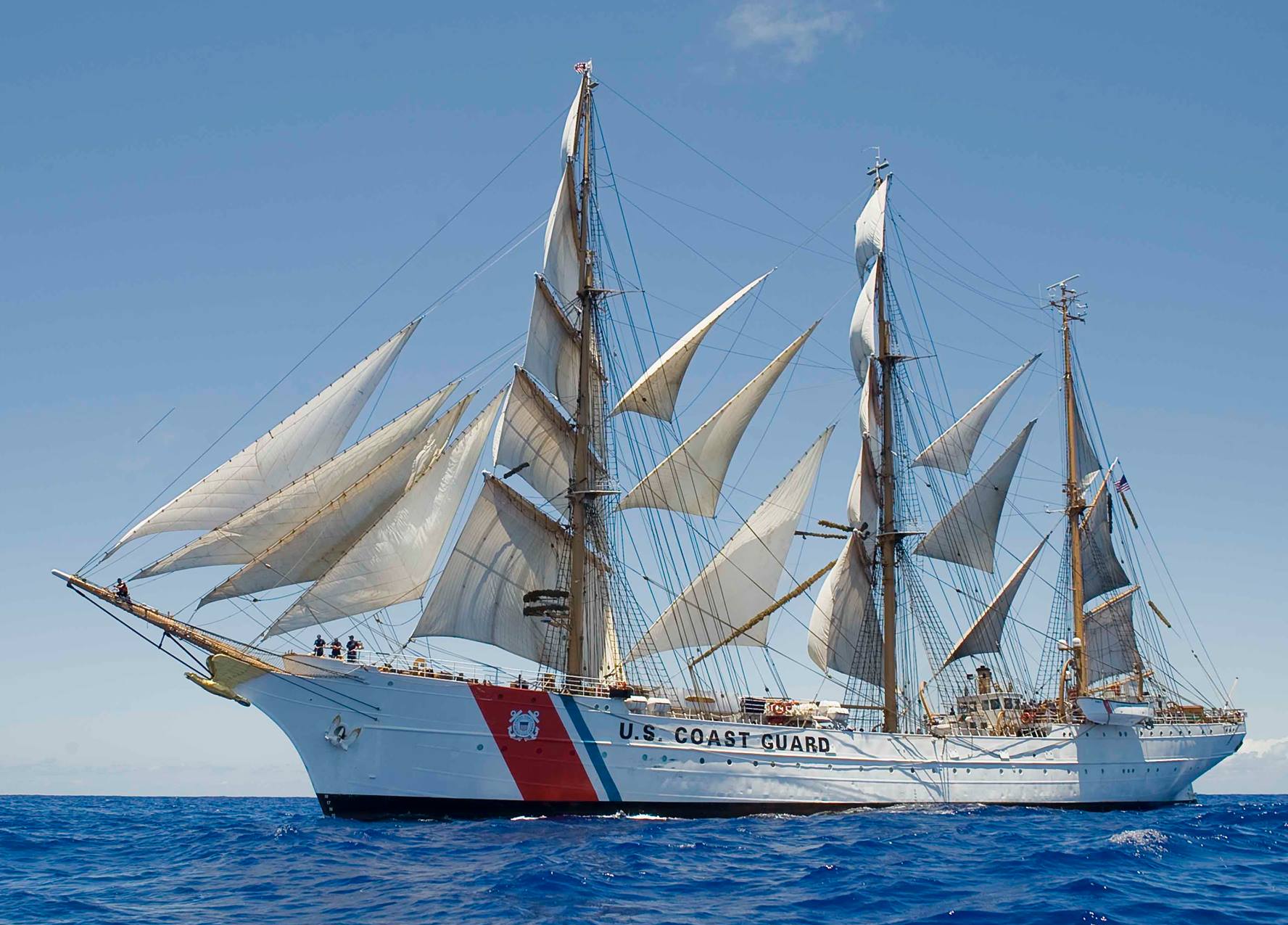|
Zeithain–Elsterwerda Railway
The Zeithain–Elsterwerda railway, also known as the Riesa–Elsterwerda railway, is a two-track, electrified main line in the German states of Saxony and Brandenburg, which was originally built and operated by the Leipzig–Dresden Railway Company (''Leipzig-Dresdner Eisenbahn-Compagnie''). It runs from Riesa via Bogendreieck Zeithain to Elsterwerda on the Berlin–Dresden railway. The line is part of the long-distance line between Chemnitz and Berlin. History Since 1872, a connection from Riesa to Elsterwerda had been considered useful by various private railway companies, such as the Berlin-Dresden Railway. The Leipzig-Dresden Railway was particularly interested in extending its route network to the north. It was considered that a projected connection from Moldova (German: Moldau) via Freiberg and Nossen to Riesa would create an attractive route for the transport of Bohemian coal to Prussia. The project was authorised by a treaty between Prussia and Saxony on 26 August 1 ... [...More Info...] [...Related Items...] OR: [Wikipedia] [Google] [Baidu] |
Elsterwerda Station
Elsterwerda station is in the town of Elsterwerda in the German state of Brandenburg. It lies on the Berlin–Dresden railway. The station is known for a train crash in 1997, when a freight train with 22 petrol tankers derailed and exploded on the station premises. Infrastructure The station has had three platform edges since its reconstruction in the 1990s: *the main platform next to the station building, which is 300 m long and 55 cm high, *an island platform, which is 300 m long and 38 cm high. An underpass that is reached by stairs connects the island platform with the main platform. History Friedrich Jage, a master mason and later an honorary citizen of Elsterwerda, built the then three-storey station building according to the specifications of the Berlin-Dresden Railway Company (''Berlin-Dresdener Eisenbahn-Gesellschaft'') in "American"-style timber construction. The station was opened with the Berlin-Dresden railway on 17 June 1875 without a public openin ... [...More Info...] [...Related Items...] OR: [Wikipedia] [Google] [Baidu] |
Berlin
Berlin ( ; ) is the Capital of Germany, capital and largest city of Germany, by both area and List of cities in Germany by population, population. With 3.7 million inhabitants, it has the List of cities in the European Union by population within city limits, highest population within its city limits of any city in the European Union. The city is also one of the states of Germany, being the List of German states by area, third smallest state in the country by area. Berlin is surrounded by the state of Brandenburg, and Brandenburg's capital Potsdam is nearby. The urban area of Berlin has a population of over 4.6 million and is therefore the most populous urban area in Germany. The Berlin/Brandenburg Metropolitan Region, Berlin-Brandenburg capital region has around 6.2 million inhabitants and is Germany's second-largest metropolitan region after the Rhine-Ruhr region, as well as the List of EU metropolitan areas by GDP, fifth-biggest metropolitan region by GDP in the European Union. ... [...More Info...] [...Related Items...] OR: [Wikipedia] [Google] [Baidu] |
Bundesstraße
''Bundesstraße'' (, ), abbreviated ''B'', is the denotation for German and Austrian national highways. Germany Germany's ''Bundesstraßen'' network has a total length of about 40,000 km. German ''Bundesstraßen'' are labelled with rectangular yellow signs with black numerals, as opposed to the white-on-blue markers of the '' Autobahn'' controlled-access highways. ''Bundesstraßen'', like autobahns (''Autobahnen''), are maintained by the federal agency of the Transport Ministry. In the German highway system they rank below autobahns, but above the '' Landesstraßen'' and '' Kreisstraßen'' maintained by the federal states and the districts respectively. The numbering was implemented by law in 1932 and has overall been retained up to today, except for those roads located in the former eastern territories of Germany. One distinguishing characteristic between German ''Bundesstraßen'' and ''Autobahnen'' is that there usually is a general 100 km/h (62 mph) s ... [...More Info...] [...Related Items...] OR: [Wikipedia] [Google] [Baidu] |
Riesa–Chemnitz Railway
The Chemnitz–Riesa railway is a two-track and electrified mainline railway in the German state of Saxony, originally built and operated by the ''Chemnitz-Riesa Railway Company''. The line was opened between 1847 and 1852 and is one of the List of the first German railways to 1870, oldest railways in Germany. The line runs from Riesa railway station, Riesa via Döbeln Hauptbahnhof, Döbeln to Chemnitz Hauptbahnhof, Chemnitz and is part of the Berlin–Chemnitz route. History In 1837, plans were submitted for a rail link from Riesa, a major freight hub on the Elbe river, to Chemnitz and on to Zwickau, which was significant as a coal-producing region. After the Leipzig–Dresden railway was opened, connecting the industrial city of Chemnitz to Leipzig and Dresden, even if it involved a detour via Riesa, was given the highest priority. On 9 May 1845 construction started and progressed rapidly on the northern section from Riesa to Döbeln. The line was officially opened on 30 Aug ... [...More Info...] [...Related Items...] OR: [Wikipedia] [Google] [Baidu] |
Chemnitz
Chemnitz (; from 1953 to 1990: Karl-Marx-Stadt (); ; ) is the third-largest city in the Germany, German States of Germany, state of Saxony after Leipzig and Dresden, and the fourth-largest city in the area of former East Germany after (East Berlin, East) Berlin, Leipzig, and Dresden. The city lies in the middle of a string of cities sitting in the densely populated northern Ore Mountain Foreland, foreland of the Elster Mountains, Elster and Ore Mountains, stretching from Plauen in the southwest via Zwickau, Chemnitz and Freiberg to Dresden in the northeast, and is part of the Central German Metropolitan Region. Located in the Ore Mountain Basin, the city is surrounded by the Ore Mountains to the south and the Central Saxon Hills, Central Saxon Hill Country to the north. The city stands on the Chemnitz River, which is formed through the confluence of the rivers Zwönitz (river), Zwönitz and Würschnitz in the borough of Altchemnitz. The name of the city as well as the names o ... [...More Info...] [...Related Items...] OR: [Wikipedia] [Google] [Baidu] |
East Germany
East Germany, officially known as the German Democratic Republic (GDR), was a country in Central Europe from Foundation of East Germany, its formation on 7 October 1949 until German reunification, its reunification with West Germany (FRG) on 3 October 1990. Until 1989, it was generally viewed as a communist state and described itself as a Socialist state, socialist "workers' and peasants' state". The Economy of East Germany, economy of the country was Central planning, centrally planned and government-owned corporation, state-owned. Although the GDR had to pay substantial war reparations to the Soviets, its economy became the most successful in the Eastern Bloc. Before its establishment, the country's territory was administered and occupied by Soviet forces following the Berlin Declaration (1945), Berlin Declaration abolishing German sovereignty in World War II. The Potsdam Agreement established the Soviet occupation zone in Germany, Soviet-occupied zone, bounded on the east b ... [...More Info...] [...Related Items...] OR: [Wikipedia] [Google] [Baidu] |
Soviet Union
The Union of Soviet Socialist Republics. (USSR), commonly known as the Soviet Union, was a List of former transcontinental countries#Since 1700, transcontinental country that spanned much of Eurasia from 1922 until Dissolution of the Soviet Union, it dissolved in 1991. During its existence, it was the list of countries and dependencies by area, largest country by area, extending across Time in Russia, eleven time zones and sharing Geography of the Soviet Union#Borders and neighbors, borders with twelve countries, and the List of countries and dependencies by population, third-most populous country. An overall successor to the Russian Empire, it was nominally organized as a federal union of Republics of the Soviet Union, national republics, the largest and most populous of which was the Russian SFSR. In practice, Government of the Soviet Union, its government and Economy of the Soviet Union, economy were Soviet-type economic planning, highly centralized. As a one-party state go ... [...More Info...] [...Related Items...] OR: [Wikipedia] [Google] [Baidu] |
War Reparations
War reparations are compensation payments made after a war by one side to the other. They are intended to cover damage or injury inflicted during a war. War reparations can take the form of hard currency, precious metals, natural resources, industrial assets, or intellectual properties. Loss of territory in a peace settlement is usually considered to be distinct from war reparations. War reparations are often governed by treaties which belligerent parties negotiate as part of a peace settlement. Payment of reparations often occur as part of a condition to remove occupying troops or under the threat of re-occupation. The legal basis for war reparations in modern international law is Article 3 of the Hague Convention of 1907. Prominent examples of war reparations include Carthage's indemnity paid to Rome following the First Punic War, French reparations following the Napoleonic Wars, Haiti's reparations to France following the Haitian War of Independence (1791–1804), Fren ... [...More Info...] [...Related Items...] OR: [Wikipedia] [Google] [Baidu] |
Royal Saxon State Railways
The Royal Saxon State Railways () were the state-owned railways operating in the Kingdom of Saxony from 1869 to 1918. From 1918 until their merger into the Deutsche Reichsbahn the title 'Royal' was dropped and they were just called the Saxon State Railways (''Sächsische Staatseisenbahnen''). History En route to a state railway After the completion of the privately financed Leipzig–Dresden railway in 1839, the Saxon parliament also began to get involved in railway construction. Early on it was recognised that railway lines to Bavaria, Bohemia and Silesia were needed and that there ought to be a route running north-to-south through the kingdom. The funding of this plan lay in the hands of privately financed railway committees. The state, however, saw itself arranging for the corresponding political and legal hurdles to be cleared. On 14 January 1841 a treaty was agreed with the Kingdom of Bavaria and the Duchy of Saxony-Altenburg for the construction of a railway route betw ... [...More Info...] [...Related Items...] OR: [Wikipedia] [Google] [Baidu] |
Prussia
Prussia (; ; Old Prussian: ''Prūsija'') was a Germans, German state centred on the North European Plain that originated from the 1525 secularization of the Prussia (region), Prussian part of the State of the Teutonic Order. For centuries, the House of Hohenzollern ruled Prussia, expanding its size with the Prussian Army. Prussia, with its capital at Königsberg and then, when it became the Kingdom of Prussia in 1701, History of Berlin, Berlin, decisively shaped the history of Germany. Prussia formed the German Empire when it united the German states in 1871. It was ''de facto'' dissolved by 1932 Prussian coup d'état, an emergency decree transferring powers of the Prussian government to German Chancellor Franz von Papen in 1932 and ''de jure'' by Abolition of Prussia, an Allied decree in 1947. The name ''Prussia'' derives from the Old Prussians who were conquered by the Teutonic Knightsan organized Catholic medieval Military order (religious society), military order of Pru ... [...More Info...] [...Related Items...] OR: [Wikipedia] [Google] [Baidu] |
Bohemia
Bohemia ( ; ; ) is the westernmost and largest historical region of the Czech Republic. In a narrow, geographic sense, it roughly encompasses the territories of present-day Czechia that fall within the Elbe River's drainage basin, but historically it could also refer to a wider area consisting of the Lands of the Bohemian Crown ruled by the List of Bohemian monarchs, Bohemian kings, including Moravia and Czech Silesia, in which case the smaller region is referred to as Bohemia Proper as a means of distinction. Bohemia became a part of Great Moravia, and then an independent principality, which became a Kingdom of Bohemia, kingdom in the Holy Roman Empire. This subsequently became a part of the Habsburg monarchy and the Austrian Empire. After World War I and the establishment of an History of Czechoslovakia (1918–1938), independent Czechoslovak state, the whole of Bohemia became a part of Czechoslovakia, defying claims of the German-speaking inhabitants that regions with German ... [...More Info...] [...Related Items...] OR: [Wikipedia] [Google] [Baidu] |
Nossen
Nossen (; , ) is a town in the Meißen (district), district of Meissen, in Saxony, Germany. It is located 80 km southeast of Leipzig. The town is dominated by a large Renaissance castle. Nossen is best known for its proximity to a motorway junction where the Bundesautobahn 14, A14 merges onto the Bundesautobahn 4, A4. Geography Neighboring towns Nearest towns are Roßwein, Großschirma, Reinsberg, Germany, Reinsberg and Striegistal in Mittelsachsen districts and Käbschütztal, Lommatzsch and Klipphausen in the Meißen district. History During World War II, a subcamp of Flossenbürg concentration camp was located here. Historical population From 1995, recorded on 31 December, unless otherwise noted:Datenquelle ab 1998: Statistisches Landesamt Sachsen Personalities Sons and daughters of the city * Friedrich Funcke (1642–1699), clergyman, cantor and composer * Paul Richter (1859–1944), architect * Manfred von Killinger (1886–1944) Nazi politician and diplom ... [...More Info...] [...Related Items...] OR: [Wikipedia] [Google] [Baidu] |




